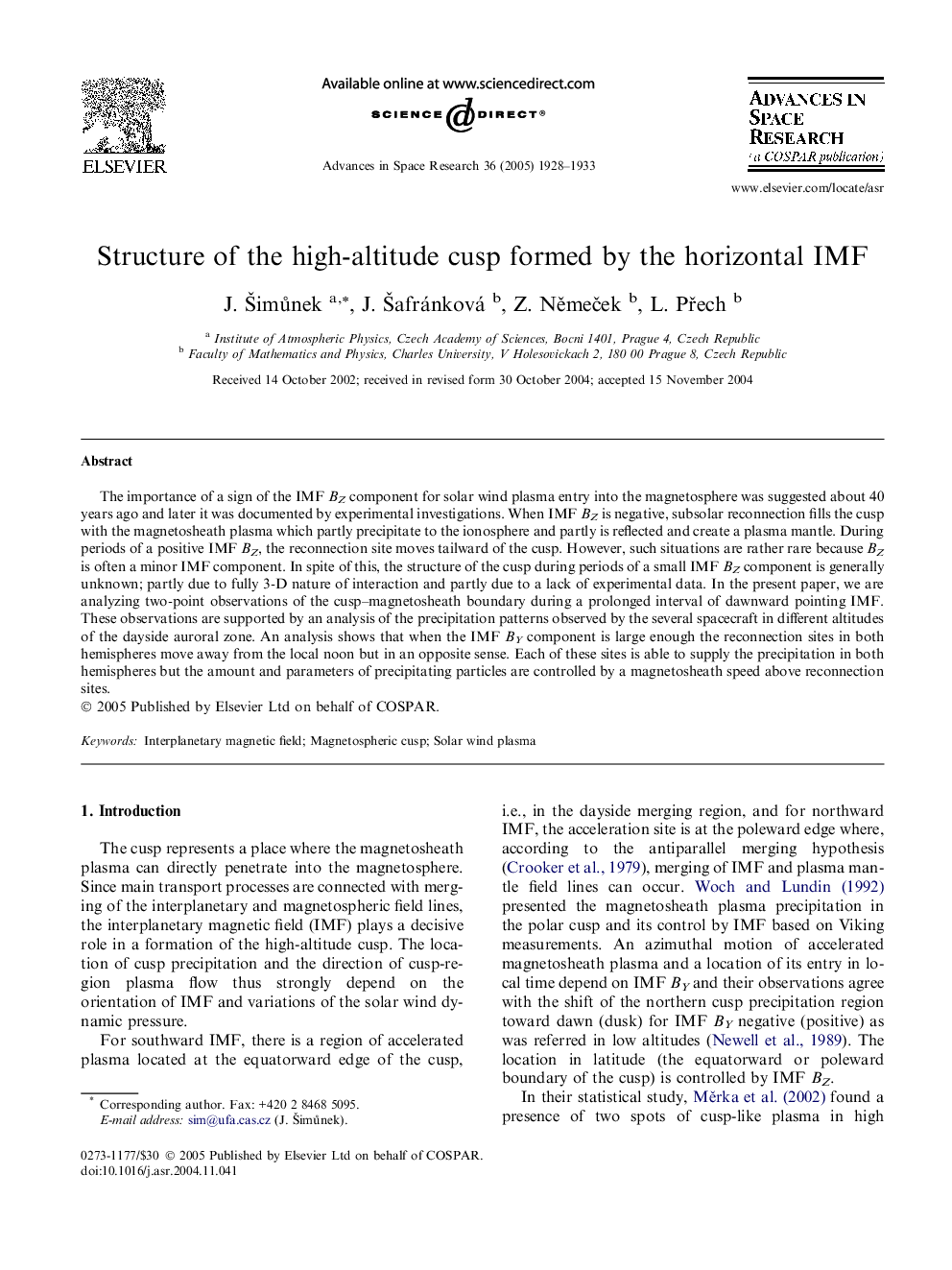| Article ID | Journal | Published Year | Pages | File Type |
|---|---|---|---|---|
| 1767760 | Advances in Space Research | 2005 | 6 Pages |
Abstract
The importance of a sign of the IMF BZ component for solar wind plasma entry into the magnetosphere was suggested about 40 years ago and later it was documented by experimental investigations. When IMF BZ is negative, subsolar reconnection fills the cusp with the magnetosheath plasma which partly precipitate to the ionosphere and partly is reflected and create a plasma mantle. During periods of a positive IMF BZ, the reconnection site moves tailward of the cusp. However, such situations are rather rare because BZ is often a minor IMF component. In spite of this, the structure of the cusp during periods of a small IMF BZ component is generally unknown; partly due to fully 3-D nature of interaction and partly due to a lack of experimental data. In the present paper, we are analyzing two-point observations of the cusp-magnetosheath boundary during a prolonged interval of dawnward pointing IMF. These observations are supported by an analysis of the precipitation patterns observed by the several spacecraft in different altitudes of the dayside auroral zone. An analysis shows that when the IMF BY component is large enough the reconnection sites in both hemispheres move away from the local noon but in an opposite sense. Each of these sites is able to supply the precipitation in both hemispheres but the amount and parameters of precipitating particles are controlled by a magnetosheath speed above reconnection sites.
Related Topics
Physical Sciences and Engineering
Earth and Planetary Sciences
Space and Planetary Science
Authors
J. Å imůnek, J. Å afránková, Z. NÄmeÄek, L. PÅech,
